Table of contents
What is the meaning of the cross?

The cross has a very broad meaning, which varies according to the time and culture in which it is used, but today, all over the world, its most common use is as a symbol of Christianity. However, even within Christianity, it is possible to find different forms of use and meaning for the figure of the cross.
Historically, it is one of the oldest and most basic symbols, having mystical-religious, social and philosophical interpretations. And it is "basic" in the sense that it is at the core of human experience itself, since we, as a species, started to walk upright and to experience daily these tensions between the vertical and the horizontal.
Let us now see how the cross evolves as a symbol within western history and what its main uses are today, both in culture in general and in Christianity, where it can take on various shapes and meanings.
The history of the cross
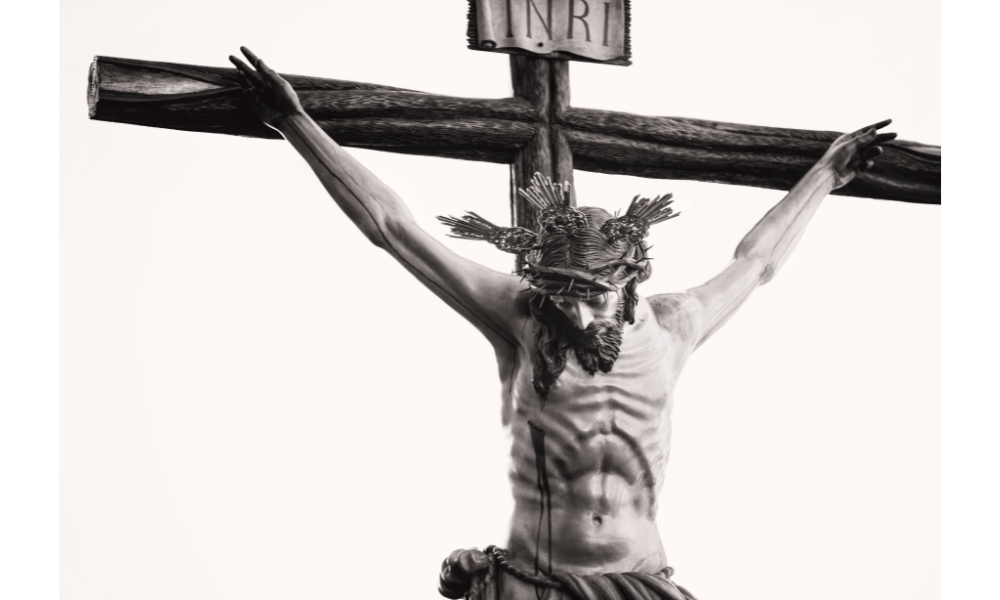
From an instrument of torture to a fashion accessory: Discover now the origin of the cross as a Christian symbol and check out some of its main uses in contemporary culture in general.
The cross as an instrument of torture
There are records of the use of the cross as an instrument of torture long before the crucifixion of Christ by the Romans. The oldest of these dates back to 519 B.C., when the Persian king Darius I crucified about 3000 enemies. Later in history, the Greeks also used the cross as a punishment against opponents of the empire.
In Rome, it was a means of torture much less used than one might think, mainly because Roman citizens never suffered this type of punishment, which was mainly intended for slaves. It served to inflict maximum torture and shame on the condemned, who were crucified in great public sessions.
The cross as a religious symbol
The crucifixion of Christ transformed the cross into the ultimate symbol of the Christian faith, although this process took several centuries, since early Christians mostly used the fish symbol to identify themselves, and eventually the letters X and P, which make up the name of Christ in Greek, merged into an ideogram.
Today, it represents the Christian faith in a general way, being seen more often in the Catholic church only because the Evangelicals usually have a certain economy in the use of images. But besides that, there are many other religions that use the cross or variations of it as a symbol.
The cross as a symbol of death
With the expansion of Christianity in the world, the cross acquired various meanings related to Christ's experience with it. Thus, over time, the cross came to signify pain and suffering, for example, and especially, it began to be used to mark the place of a death or to indicate the date of a death.
For this reason, today it is very common to find it by the side of roads or other places indicating that someone died there. Likewise, on tombstones in cemeteries, it was agreed to use a star to indicate the date of birth and the cross for the date of death, certainly in reference to the death of the crucified Christ.
The cross as a symbol of health
During a very bloody battle in the middle of the 19th century, a Swedish doctor named Henri Dunant decided to organize care for all the wounded, regardless of which side they were fighting on. Thus, Dunant established the use of the red cross as a symbol of health care so that whoever wore it would not be shot in battle.
All over the world, the red cross is conventionally used to identify hospitals and health care units. In many places, the green cross is also used to identify pharmacies, so that the Federal Council of Pharmacies in Brazil recommends the use of the symbol to facilitate the identification of establishments on public roads and also by foreigners.
The cross as a fashion accessory
The use of the cross as a fashion accessory is very recent in comparison to other uses. It started in the early 70's and is very much linked to the cultural and sexual revolution that occurred at that time, having been transposed to the fashion world by punks and goths of the period.
One of the main people responsible for popularizing the cross as a fashion prop was British model and actress Pamela Rooke, who was connected to the famous London boutique Sex, having worked with one of its owners, Vivienne Westwood.
But it was certainly pop singer Madonna who finally popularized the use of the cross as a fashion prop, using it in a more profane way and making room for it as a fashion prop worldwide.
Symbology of the cross
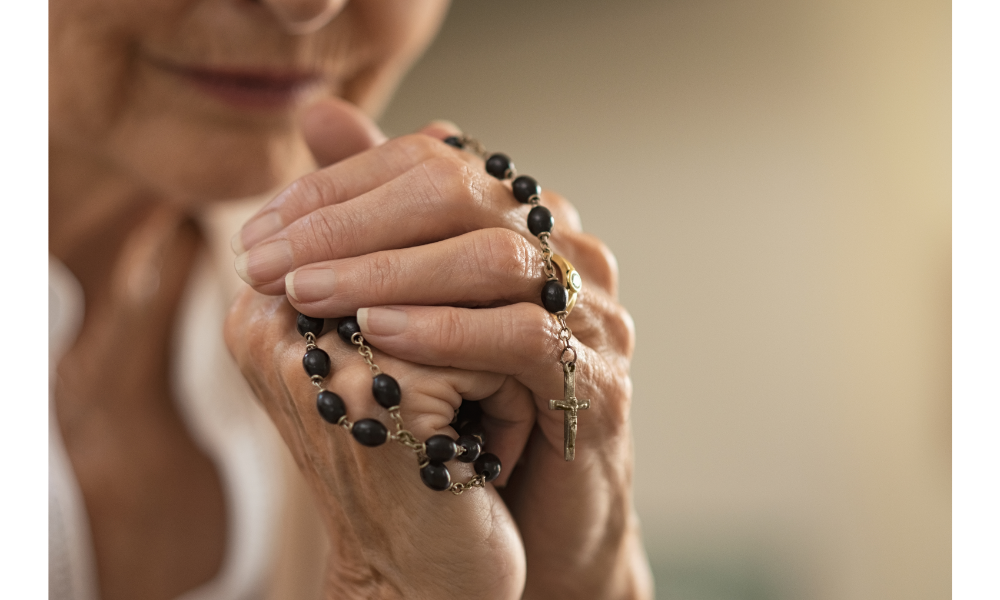
The design is simple - two lines crossing each other, but its meaning can be incredibly complex. Let's now look at some of the most common ways the cross is used as a symbol from a mystical and religious perspective.
Union of the human with the divine
Insofar as the vertical line of the cross establishes a connection between heaven and earth, the cross is then seen, within a mystical perspective, as a symbol of the union between the human and the divine.
In Christianity, this union is guaranteed by Christ's sacrifice, which had precisely the purpose of redeeming humanity so that it could reconnect with its creator. Christ's surrender to the designs of God is also an example of the path to this communion.
The four elements
Also within a mystical perspective, throughout History, the cross keeps a relationship with the four basic elements which are air, earth, fire and water. The same is true for other aspects of human nature (or nature in general) that can be divided into four, such as the cardinal points or personality types: choleric, sanguine, melancholic and phlegmatic.
Magical thought understands that air and fire are active elements, and therefore, in the representation of the cross, they would be in the vertical axis, in ascension. On the other hand, water and earth would be passive elements, that "fall", and so would be represented in the horizontal axis of the cross.
Death and Resurrection of Christ
According to the biblical narrative and Christian faith around the world, Christ died on the cross to fulfill God's plan for the salvation of mankind and redemption from their sins. The resurrection, on the third day, would be the promise of eternal life and the assurance of victory over the powers of the flesh and the Devil.
Besides the mystical aspects of this interpretation, the sacrifice of Jesus is understood as proof of his absolute and unconditional love for humanity. It is God's own love, since the two are one in the Trinity. All these aspects of Christianity are present in the symbolism of the cross used by Christians.
Life and death
Though it was the instrument of Christ's suffering and death, the nature of his sacrifice and the fact that he rose again on the third day make the cross as much a symbol of life as it is a symbol of death.
The teaching drawn from a symbolic analysis of the death and resurrection of Christ is that those who wish to approach God must die to the world and the flesh and be reborn to the spirit and to divine communion. It is in this way that the symbolism of the cross acquires the ambivalent features it possesses, representing at the same time death and the victory of life.
Types of cross
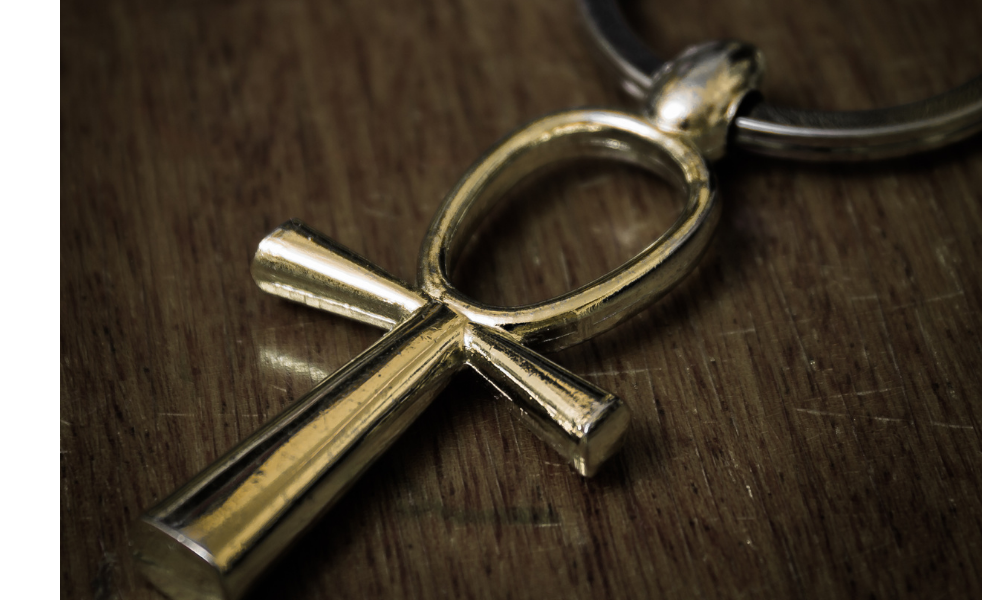
Now, you will get to know different types of cross, not only in several different cultures and historical periods, but also within Christianity itself, where the image can vary and take on very particular meanings.
Christian Cross
The Christian cross is the one we merely call the cross, having the vertical axis longer than the horizontal one, which is located above the center of the vertical line. It is the one that represents, for Christians, the general and universal values of Christianity, and it is also the one that receives the image of the crucified Christ, becoming a crucifix.
But long before the passage of Jesus on Earth, this cross was already used, both in the Neolithic period and, later, by Egyptians, Greeks, Celts and Aztecs. In some of these cases, it was represented inside a circle in reference to the sun and the cycles of nature.
Maltese cross
The cross of malta has four arms of equal length with ends divided into two ends each, totaling eight ends. It is also called the Cross of Amalfi or Cross of St. John. It represents the Order of the Knights Hospitallers, or the Order of Malta.
This Christian military order imposes eight duties on its knights, symbolized then by the eight points of the cross of malta. They also symbolize the rebirth of these knights, but it was also adopted by several other organizations as a symbol of protection and honor.
Red Cross
The red cross was first used in 1859 in Italy during the bloody battle of Solferino. The Swedish doctor Henri Dunant used it to protect a medical group carrying care to the wounded of both armies. The shape chosen was that of the red cross on a white background because this is a reversal of the colours of the Swedish flag.
Since then, the red cross has become a symbol strongly associated with medical care. In 1863, Dunant founded the international Red Cross institution, which aims to bring humanitarian medical care to all those in need around the world.
Greek cross
The Greek cross is equal to the mathematical sign of "plus", therefore being square, with the four sides equal. It was the cross used by Christians in the fourth century, being called basic cross or "crux quadrata" in Latin.
It represents the four cardinal points and the four winds, thus being a symbol of the dissemination of the word of God, which should be taken to the four corners of the world. Currently, it is no longer used by Christians, but its format is the one that appears on the red cross, being a symbol of medical aid throughout the globe.
Latin cross
The Latin cross has a very long vertical axis and a shorter horizontal one. Generally, the side arms and the one at the top have the same length, but eventually the one at the top is shorter. It is the closest, in fact, to the shape that the cross on which Jesus died had.
Its name in Latin is "cross immersed", and its symbolism refers to reincarnation, light, and Jesus Christ. When it is placed upside down, it is called St. Peter's cross, and when it is placed sideways, it is called St. Philip's cross.
St. Andrew's Cross
The cross of St. Andrew is in the shape of an "X" and is so called because St. Andrew chose a cross of that shape to be crucified on when he received his condemnation, judging himself unworthy to be crucified in the same manner as his Lord Jesus Christ.
Its name in Latin is "crux decussata", and it is also called "sautor" or "Cross of Burgundy". It is commonly used in heraldry, which is the symbolism of coats of arms and shields that represent families or institutions. From the fourteenth century, it also began to figure in flags.
St. Anthony's Cross
The cross of St. Anthony is better known as "tau", which is the last letter of the Hebrew alphabet and was also included in the Greek alphabet. Without the upper arm of the vertical axis, the tau is like a "T" with curved contours. It had already been used to symbolize the Greek god Attis and the Roman god Mithras.
Chosen by Saint Francis to represent the Franciscan order, the tau became known as Saint Anthony's cross because of the famous Franciscan saint who was one of the creators of monasticism, Saint Anthony of the Desert, or Saint Anthony.
Egyptian cross
One of the best known symbols of Ancient Egypt, the cross of ansata, or Ankh, is a hieroglyphic meaning "life" or "breath of life". Being the key that connects the world of the living and the dead, the Egyptian cross is related to the goddess Isis and has, therefore, a connotation of fertility.
It has been adapted for several other religions and is very present in Wicca, where it represents immortality, protection and fertility, while in alchemy it is used to symbolize transformations. Christians call it the Coptic cross in reference to the first Christians in Egypt, or Copts, and associate it with rebirth and life after death.
St. Peter's Cross
The cross of Saint Peter is basically the Latin cross placed upside down, in reference to the form chosen by the apostle Peter for his crucifixion. Condemned as an agitator, Saint Peter refused to be crucified in the same manner as his master Jesus, opting instead for the inverted cross.
In the Middle Ages, this same inverted cross started to be used as a symbol of Satanism, due to the fact that it is the inversion of a Christian symbol. It is associated, therefore, with the antichrist, having been popularized this way by the cultural industry of the 20th century.
Cross bowed
Appearing on staffs carried by Popes Paul IV and John Paul II, the bowed cross was a creation by Italian artist Giacomo Manzoni, and makes mention of the "weight" the leader of the Holy Church must bear without ever breaking.
It had previously been adopted by Satanists as the "Mark of the Beast" or as a symbol of the Antichrist himself, from a cartoon representation of the cross and crucifix made by Satanists in the year 666. The original creation included a distorted representation of Christ and was used in black magic rituals.
Celtic cross
The Celtic cross includes a circle whose central point is also the point of intersection of the axes of the cross, thus connecting its four arms. It is much older than the Christian cross and represents spirituality focused on creation, as well as the balance between life and eternity by the junction of the four primordial elements.
It is used until today by neo-pagans as an amulet or talisman, but it was also adopted by Christians and became a symbol of the Baptist and Anglican churches. For Christians, the circle on this cross represents eternal renewal through the death and resurrection of Christ, while for the Celts it represented the sun.
Cross caravaca
The first caravaca cross miraculously appeared in the town of Caravaca in Spain during the 14th century, and soon the legend spread that it possessed a fragment of the cross of Christ himself. It is like an ordinary cross, except that it has two horizontal axes, the top one being a little shorter than the bottom one.
Also called the cross of Lorraine, it is a well-known amulet and powerful symbol of freedom used in battles by the French Joan of Arc. In the Catholic Church, it is the cross used to identify the cardinals.
Gothic cross
The Gothic cross is nothing more than a normal Christian cross adorned or ornamented in a very expressive and loaded way, following the Gothic aesthetic of the medieval era. The Gothic culture is very interested in the occult, being essentially pagan and not satanic, as one might assume. Thus, the Gothic cross symbolizes a more obscure and mysterious side of faith.
Widely used in tattoos and, in general, in the aesthetics adopted by goths and punks of the late twentieth century, who popularized the cross as a fashion prop. Although it is very expressive and loaded with spiritual symbolism, it is much less used as an expression of faith than merely as a style.
Cross of Portugal
Also called the cross of the Order of Christ, the Cross of Portugal descends from other crosses created to represent the Order of the Knights Templar in the Middle Ages. It is square, i.e. it has four equal sides, being a white cross on a red cross which has the ends widened.
It is the Portuguese national symbol, appearing on its flag and in several architectural works. It became known, thus, as the Discovery Cross, because it stamped the sails of the ships that first came to America. It is often confused with the Malta Cross, which has a slightly different design.
Other manifestations of the cross
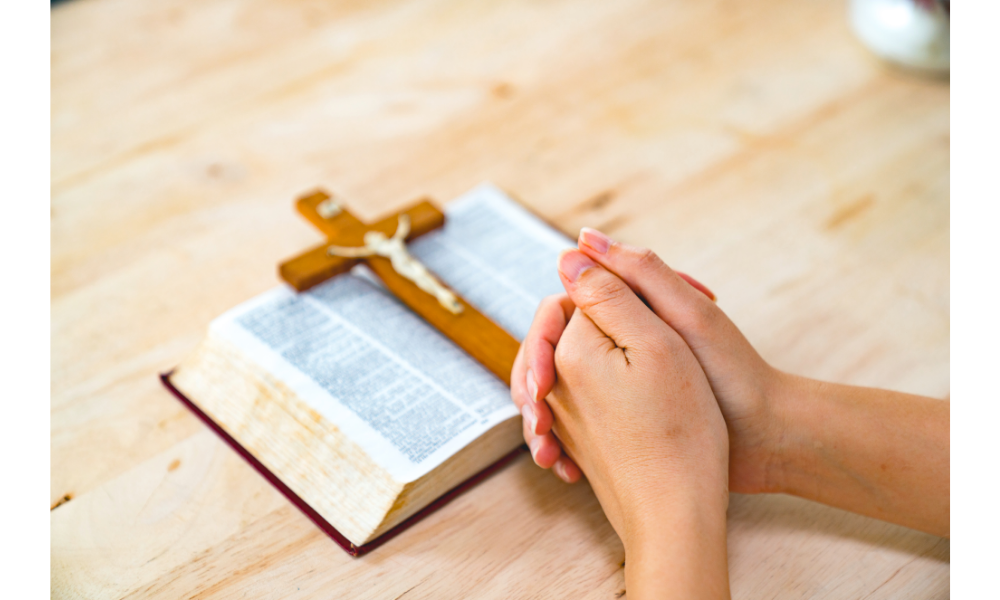
Finally, we will observe other forms of manifestation and use of the cross as a symbol, whether through the sign of the cross and the images of crucifixes in the Catholic tradition, as well as at crossroads.
Sign of the cross
The practice of making the sign of the cross has origins dating back to the second century and two different Christian leaders of the time who mention it in their writings: Father Tertullian and Saint Hippolytus of Rome. Today, the sign of the cross is made by faithful of the Roman Catholic and Orthodox Churches.
One of the ways of making the sign of the cross is with the thumb on the forehead, but the most common is for it to be made by touching the forehead, the chest and both shoulders, successively, with the tips of the fingers, while saying: "In the name of the Father, the Son and the Holy Spirit".
According to Catholic symbolism, the speech manifests belief in the Trinity; the vertical movement of the hand demonstrates belief in the conception of the Virgin Mary and the incarnation of Jesus; and the set of gestures, belief in redemption through Christ's death on the cross.
Crucifix
The oldest known crucifix dates from the tenth century, created from a model that an unknown artist made for Archbishop Gero of Cologne, Germany. It is found at the door of the church of Santa Sabina in Rome, not very visible, because at that time images of the suffering and sacrifice of Christ did not yet have much appeal, preferring the more "positive" symbol of the fish.
It is important to note that what differs the cross from the crucifix is that the latter includes the image of Christ crucified, and in general, the inscription I.N.R.I. as it was placed to the cross on which Jesus died. It is an essentially Catholic artifact, since evangelical churches usually condemn the use of images, using at most drawings or simple sculptures of the empty cross.
Crossroads
Crossroads populate the collective imagination as places loaded with mystical charge, regardless of the spiritual or religious beliefs that each human being may have. For some religious cultures of Africa, it is a place where spirits live.
Thus, several religions of African origin transform crossroads into places of offerings to spiritual entities in exchange for specific favors or protection in general. It is at crossroads that this characteristic of crosses as a point of convergence for points dispersed throughout the world stands out the most.
Does the cross represent only Christian religiosity?
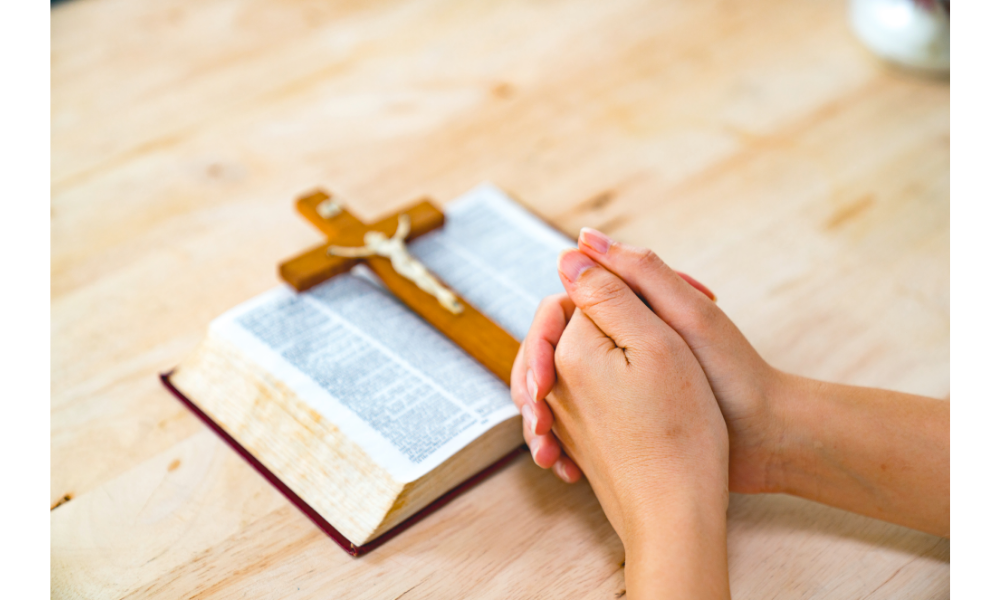
No, it is far from representing only Christian religiosity. The cross appears in various cultures and it is not in all cases associated with a more properly spiritual perspective. In many cultures, epochs, or even in different circumstances today, it can assume ordinary meanings without any relation to any type of religiosity.
Within the Christian tradition, the cross has come to occupy a central position, and in general, it is enough for a person to carry a cross carved or drawn in plain sight for him to be identified as a Christian.
In this way, and especially for those who share this faith, it is very difficult to dissociate the cross from its dogmatic meaning in Christianity and to understand it as a symbol of something else, as indeed it can be.

